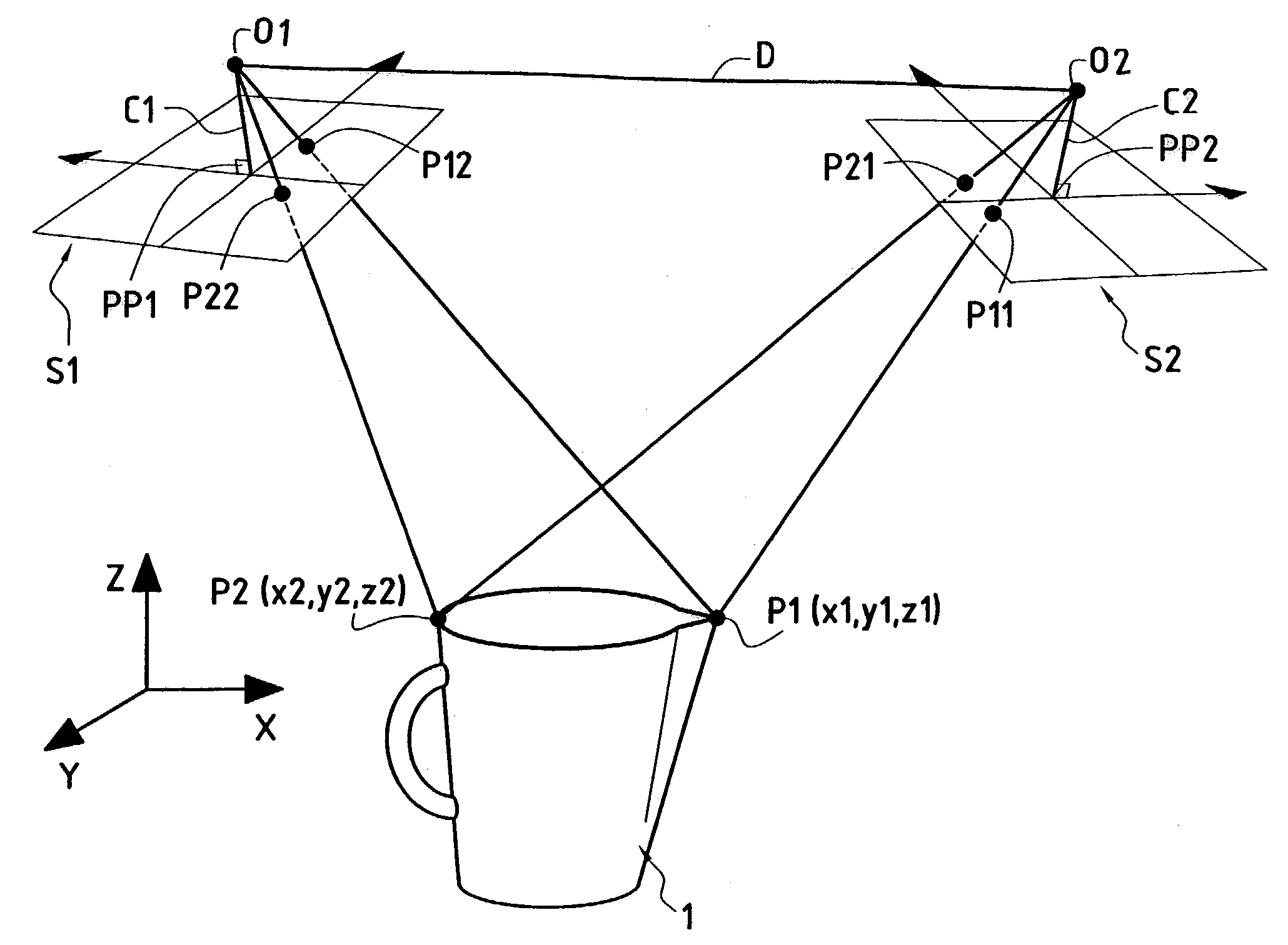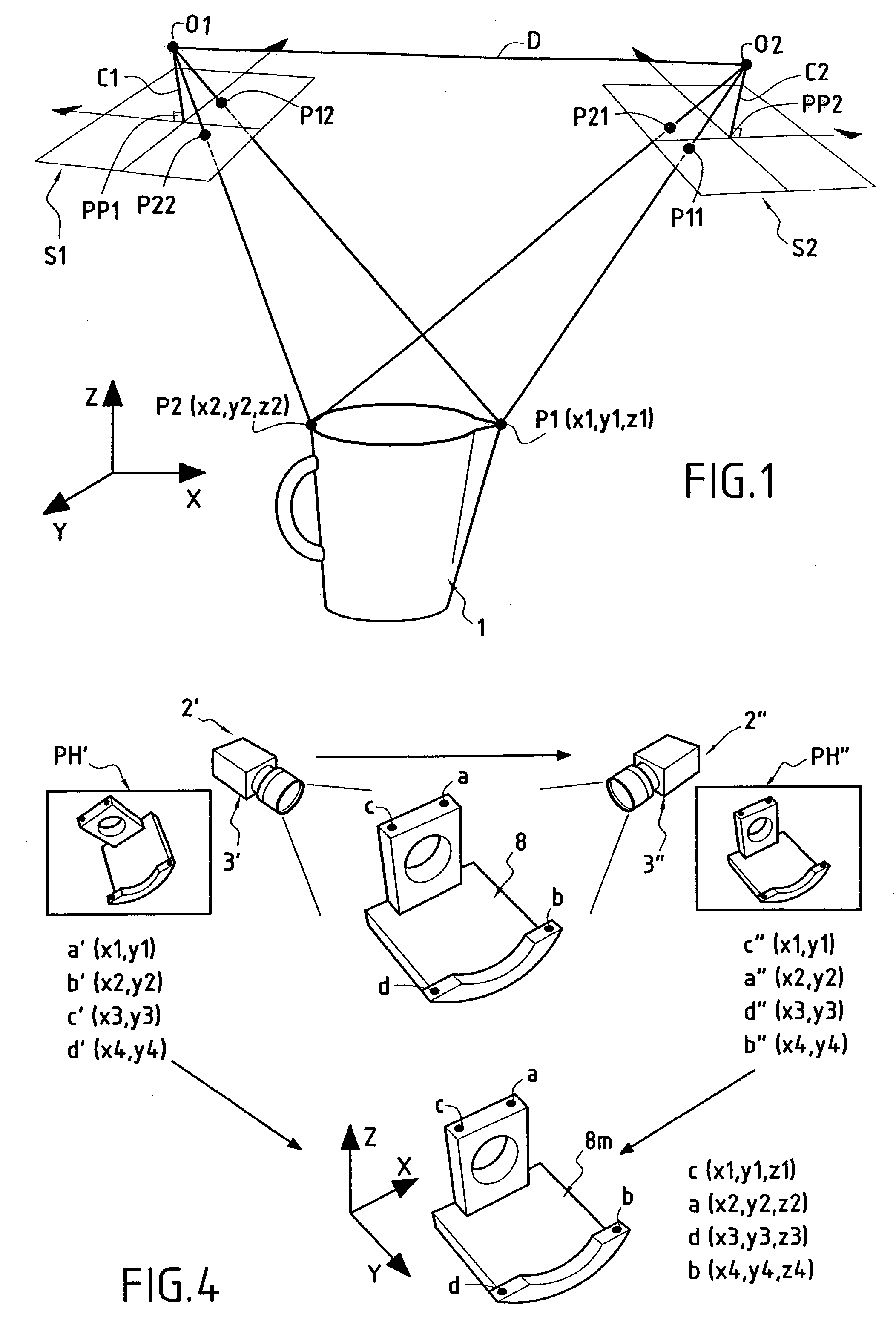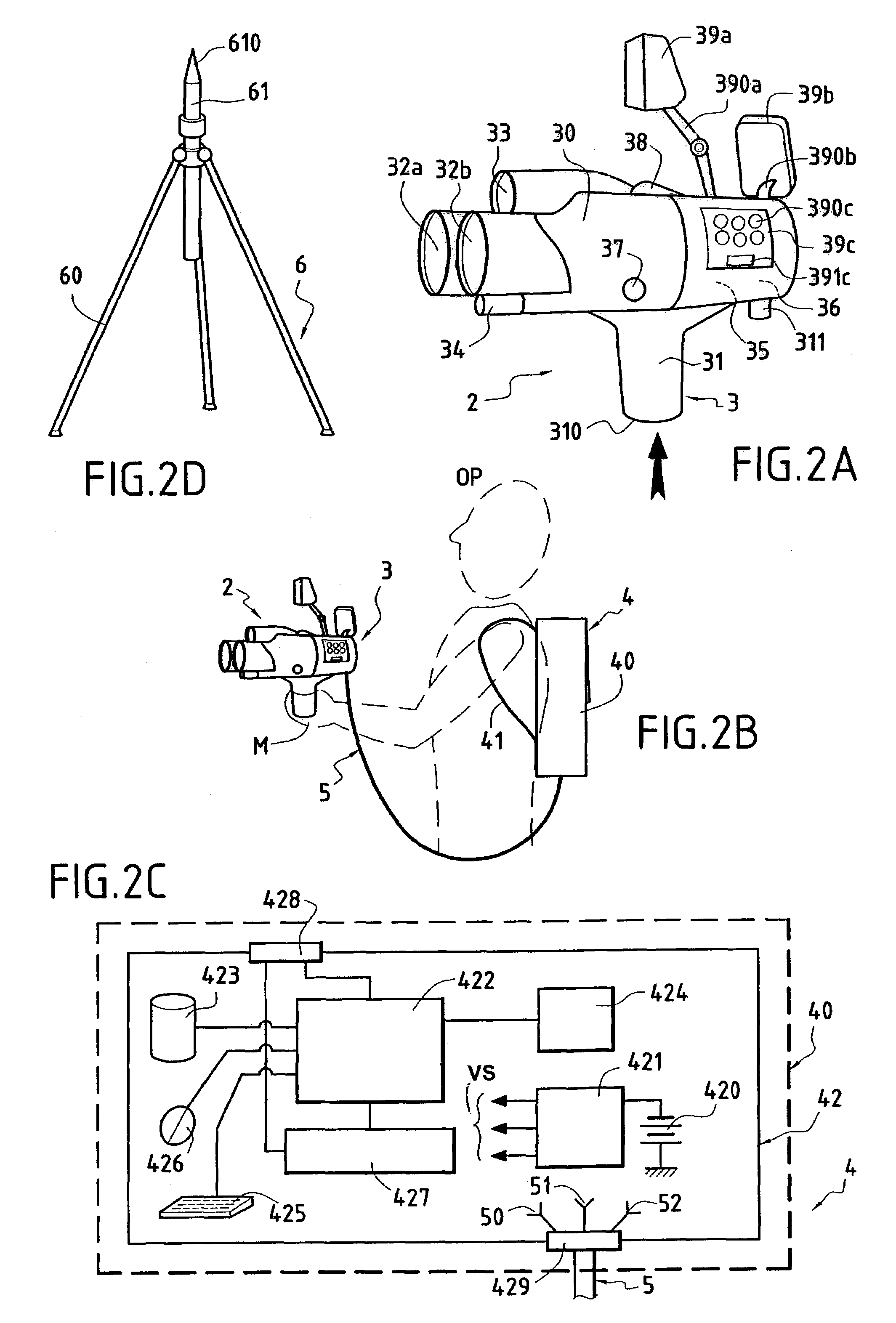System and a method of three-dimensional modeling and restitution of an object
a three-dimensional modeling and object technology, applied in surveying and navigation, instruments, navigation instruments, etc., can solve the problems of varying distances, problems such as the inability to accurately reflect reality, and the inability to accurately represent the object to be modelled
- Summary
- Abstract
- Description
- Claims
- Application Information
AI Technical Summary
Benefits of technology
Problems solved by technology
Method used
Image
Examples
Embodiment Construction
[0068]There follows a description of the system for three-dimensionally modeling and restitution an object constituting a preferred embodiment of the invention, given with reference to FIGS. 2A to 2D.
[0069]To simplify the description, terms such as “three-dimensional” or “in three dimensions” are replaced below by the abbreviation “3D”.
[0070]In the figures, elements that are identical have the same references and are described again only where necessary.
[0071]FIG. 2A is a diagram of that which is referred to below as the “first” subsystem 2 in a system of the invention.
[0072]This subsystem 2 is essentially constituted by a housing 3 similar in appearance to a video camera, a camcorder, or the like. The housing 3 comprises a rigid cell 30 advantageously made of magnesium alloy, thus ensuring that it is both rigid and lightweight. In conventional manner, the shell is provided with a bottom handle 31.
[0073]The first subsystem 2 comprises firstly, in the housing 3, optical elements.
[007...
PUM
 Login to View More
Login to View More Abstract
Description
Claims
Application Information
 Login to View More
Login to View More - R&D
- Intellectual Property
- Life Sciences
- Materials
- Tech Scout
- Unparalleled Data Quality
- Higher Quality Content
- 60% Fewer Hallucinations
Browse by: Latest US Patents, China's latest patents, Technical Efficacy Thesaurus, Application Domain, Technology Topic, Popular Technical Reports.
© 2025 PatSnap. All rights reserved.Legal|Privacy policy|Modern Slavery Act Transparency Statement|Sitemap|About US| Contact US: help@patsnap.com



